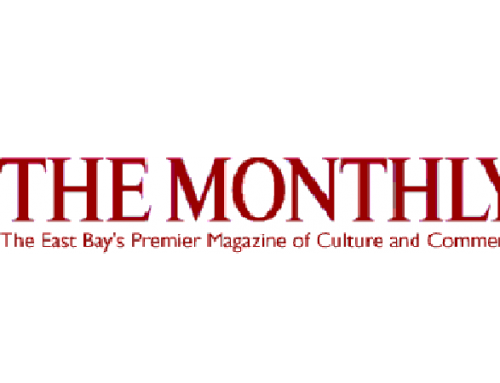By Chanelle Bessette, Fortune
A new digital publication called the Richmond Standard gives San Francisco Bay Area residents local news—and Chevron views.
The oil and gas giant Chevron CVX 0.30% has a complicated relationship with Richmond, Calif., a gritty working-class city across the bay from ritzy San Francisco and home to a decades-old Chevron oil refinery. The largest single taxpayer in town, Chevron’s refinery employs 3,500 people in a city of just over 100,000 residents. It also is a mistrusted neighbor, whose periodic accidents announce themselves with plumes of noxious smoke over the city’s neighborhoods.
In a professed effort to demonstrate its corporate commitment and also to smooth over its prickly neighborly relations, Chevron earlier this year took a novel approach. It funded a news website called the Richmond Standard, conceived by Chevron’s public-relations agency and run by single veteran Bay Area journalist, Mike Aldax. With a name that winks at Chevron’s predecessor company, Standard Oil of California, the online publication runs stories aimed at Richmond residents: recent topics include an area musician’s new album, a proposed fast food restaurant, and a recent rash of car thefts. Alongside such local fare, the Standard also publishes clearly labeled public relations messages from its owner. (“Newer, safer, cleaner – and other common sense reasons for refinery modernization,” one headline says.)
Barely six months into its existence, the publication has found itself in a spat with Richmond’s mayor, Gayle McLaughlin. The mayor, an outspoken Chevron critic, has openly supported the government of Ecuador, which is locked in a multi-year battle with Chevron over alleged damage to the Ecuadorian rainforest caused by an oil pipeline built by Texaco, which Chevron acquired in 2001. (In March, a U.S. federal court found that the $9.5 billion in damages Ecuador sought from Chevron was unenforceable and the product of fraud and racketeering by Ecuador’s lawyers.) Last fall, McLaughlin traveled to Ecuador at the invitation of MCSquared, a New York PR firm that counts the Ecuadorian government among its clients.
Enter Chevron’s community newspaper, which has written about McLaughlin’s trip—and her tardiness in reporting $4,499 in travel expenses picked up by the Ecuadorians. Aldax, a onetime reporter with the San Francisco Examiner, says he learned of the connection between McLaughlin, MCSquared, and the Ecuadorian government through national news outlets such as Bloomberg News. His goal was to localize the story in the Standard. “This is an example of the type of watchdog reporting that is offering balance to stories affecting the community,” he said.
Richmond’s mayor sees the effort as propaganda dressed up as journalism. “The Richmond Standard is simply the latest communication channel Chevron is using in a desperate campaign to try to repair its extremely negative reputation in our community,” she said by e-mail. “[Chevron should] focus on designing a cleaner, safer refinery—and less on creating a thick media smokescreen.” McLaughlin noted that Chevron has pursued a local campaign that includes billboards, cable TV advertising, telemarketing, door-to-door canvassers, and direct mail in addition to the Standard.
Chevron’s local-news project was born in the head of Sam Singer, a Bay Area publicist known for political and advocacy campaigns. Singer calls his brainchild a “healthy combination” of local news and Chevron’s perspective—about an 80/20 split, respectively. To Singer, Chevron is ahead of the curve. “I think Chevron is progressive,” he says, predicting that other companies will follow its lead by creating similar publications.
Singer declined to provide an exact tally of the Standard’s readership, but he said that the site already has exceeded its goal of 30,000 unique visitors per month for the year. He also declined to divulge the Standard’s budget. Melissa Ritchie, a spokesperson for Chevron, said that Chevron is hoping to run the site as long as it’s something that the community positively responds to.
The journalist responsible for the Standard’s content doesn’t apologize for working for Chevron. “I like the freedom and the challenge of capturing and reporting news without the reliance on advertising,” said Aldax, in e-mail responses to questions from Fortune. “[It] is refreshing, and I hope [it] will become a trend because of Chevron’s commitment to the Richmond Standard.”
Aldax, who is a Singer Associates employee, added that he goes through the same channels as other media when contacting Chevron. “I am autonomous in the same way all editors are autonomous,” he said. Writing about the Richmond mayor’s Ecuadorian adventure was his idea, not Chevron’s, he said. Ritchie said that Chevron doesn’t run interference on Aldax’s articles, although he occasionally reaches out to the company for comment on Chevron-related stories.
For its part, Chevron doesn’t hide its agenda. It contributes a PR-focused section to the site—written by Chevron’s corporate team —called “Chevron Speaks.” The section is separated so that readers can distinguish it from community news. (Not that it’s very difficult to: “Major inaccuracies in KPIX 5 story on Chevron Richmond modernization project,” reads one story from April.)
Combining PR and journalism doesn’t sit well with journalism traditionalists. Alan Deutschman, a business journalism professor at the University of Nevada, Reno and a former Fortune writer in the 1990s, finds Chevron’s methodology “insidious.” Straightforward PR is one thing, he said, but even if a site like the Standard can do some good reporting, it is ultimately compromised by its corporate sponsorship.
“The reality is that in this time where people are finding news through search engines or isolated web pages on their phone, they’re not going to be getting the whole context of the article,” Deutschman said. “They might not necessarily know that this is a PR effort. From a PR standpoint, it’s a smart thing. From a journalism perspective, it’s something that has potential for abuse.”
Correction, June 30 2014: An earlier version of this story misstated the Richmond Standard‘s traffic goal for the year. It is 30,000 unique visitors per month.


